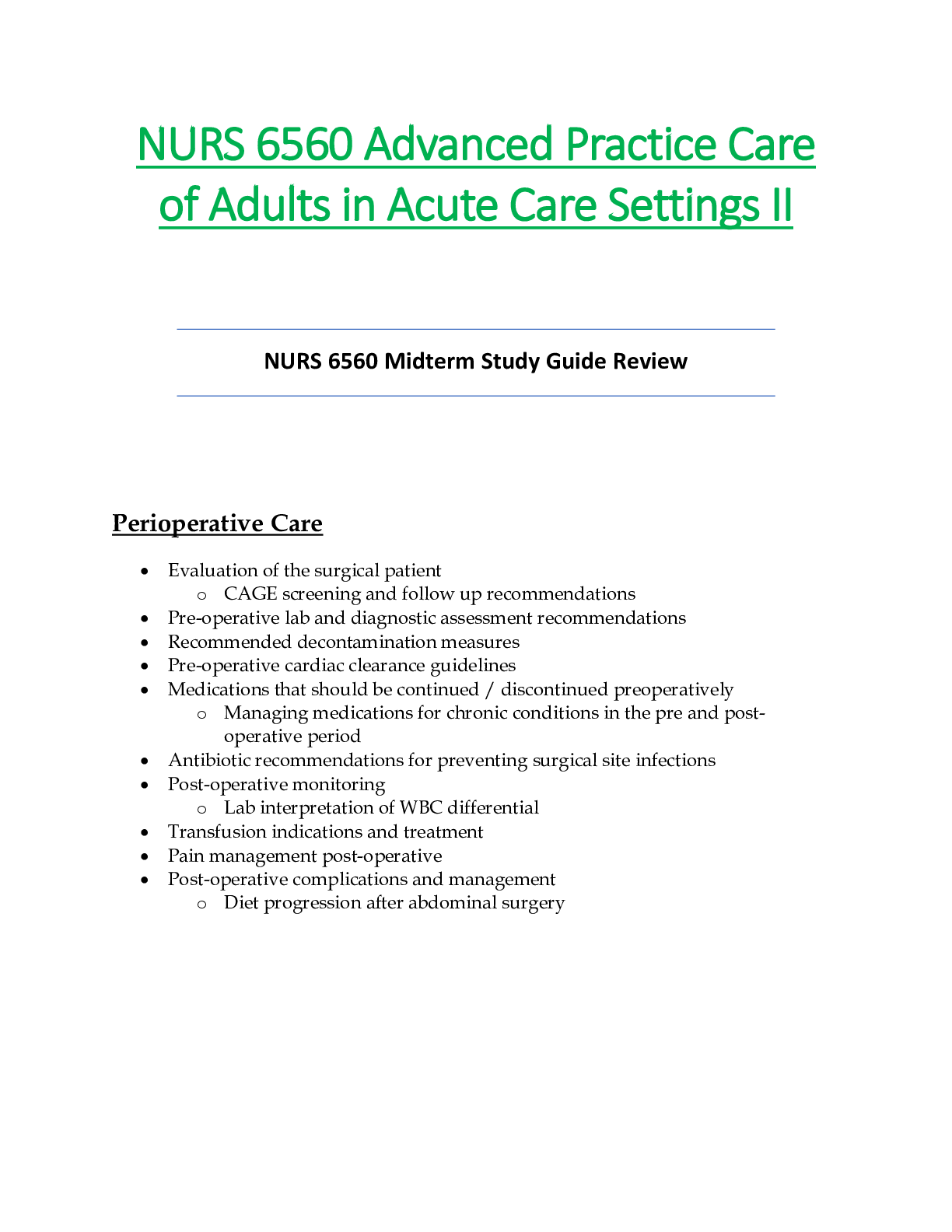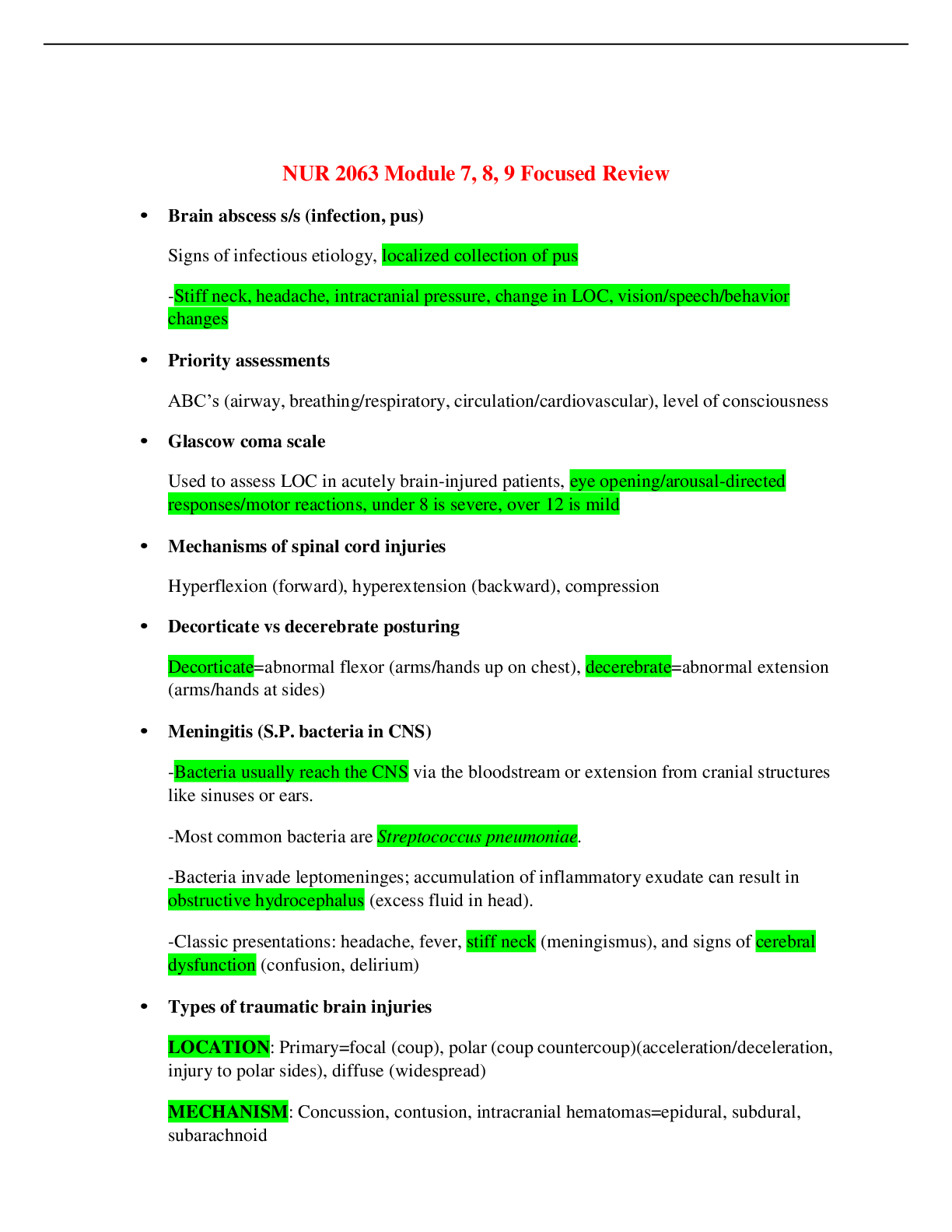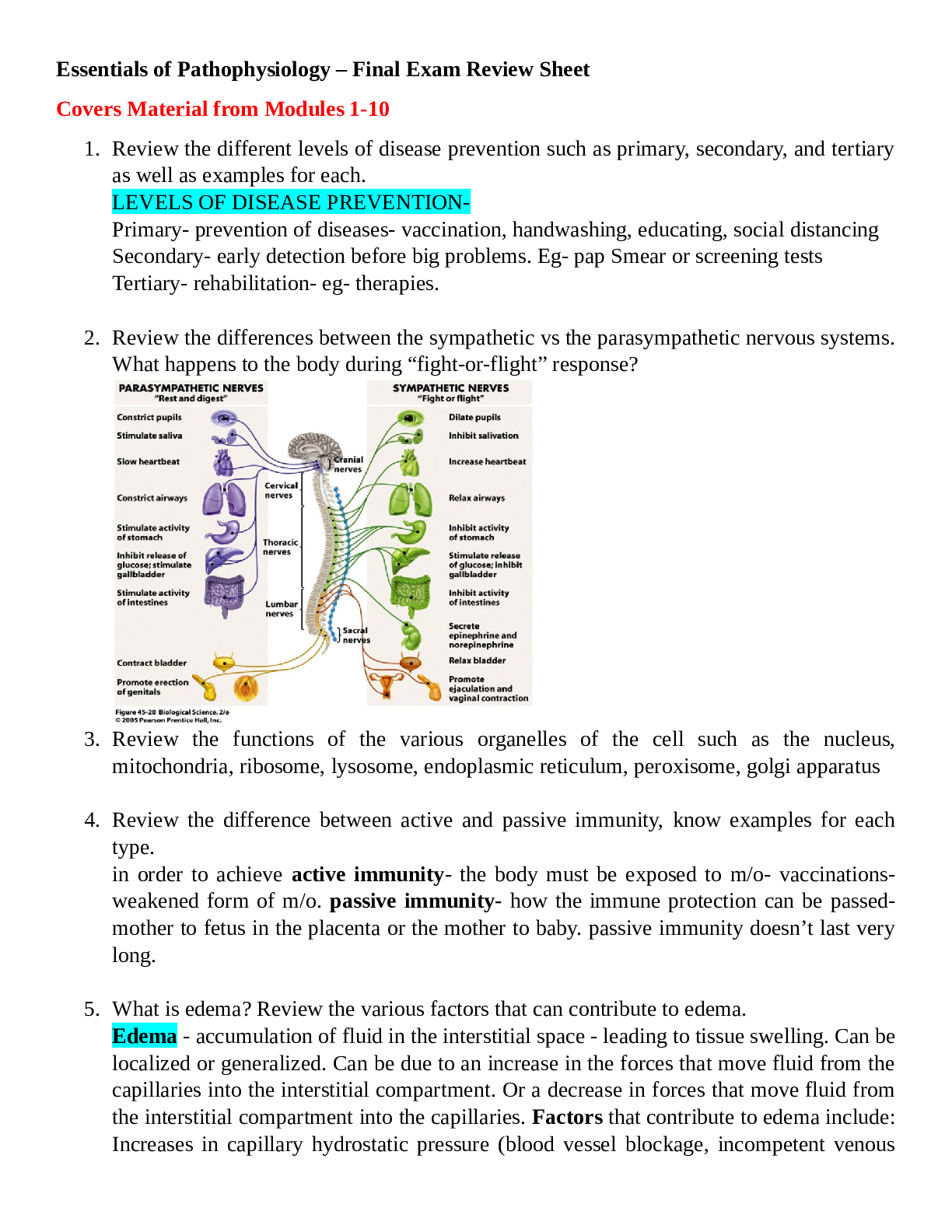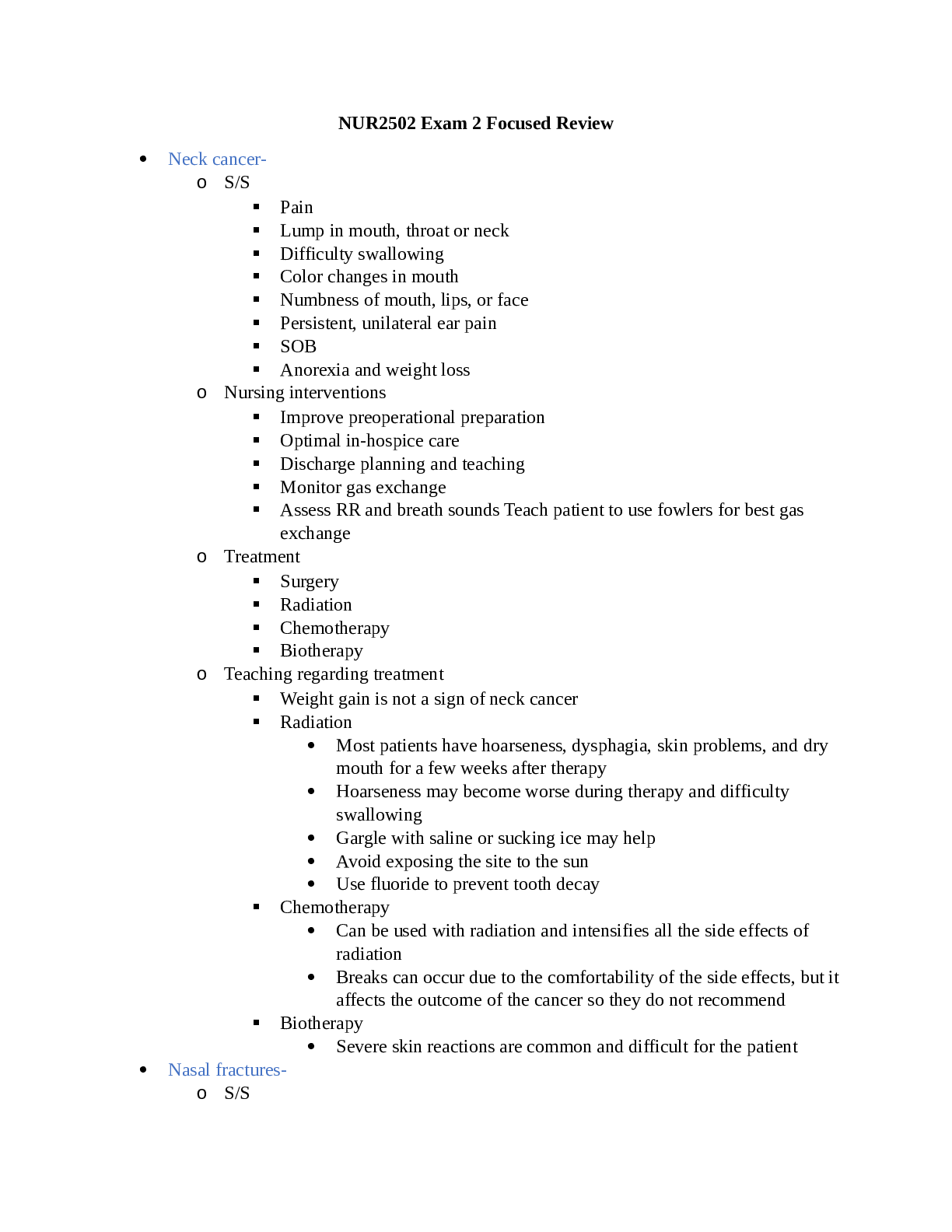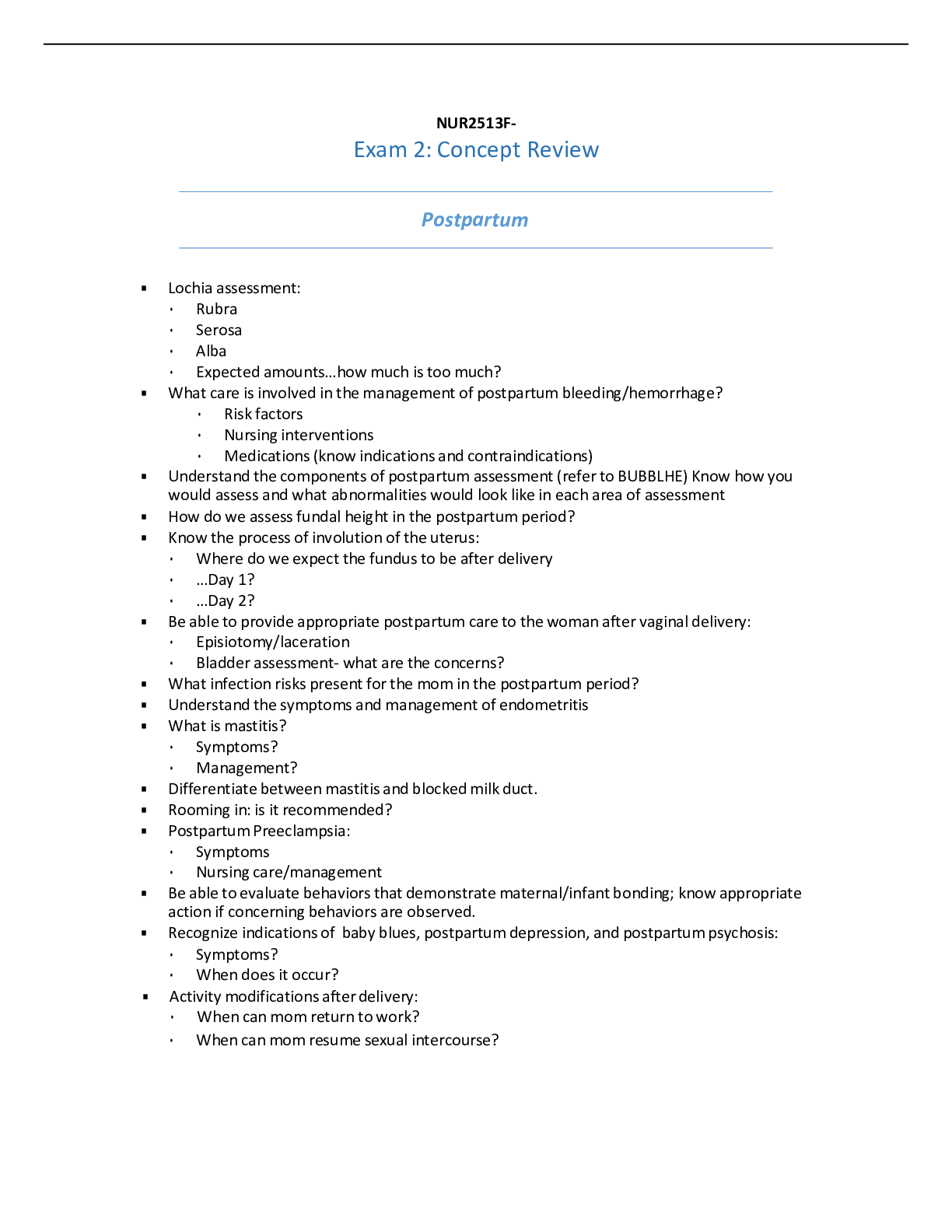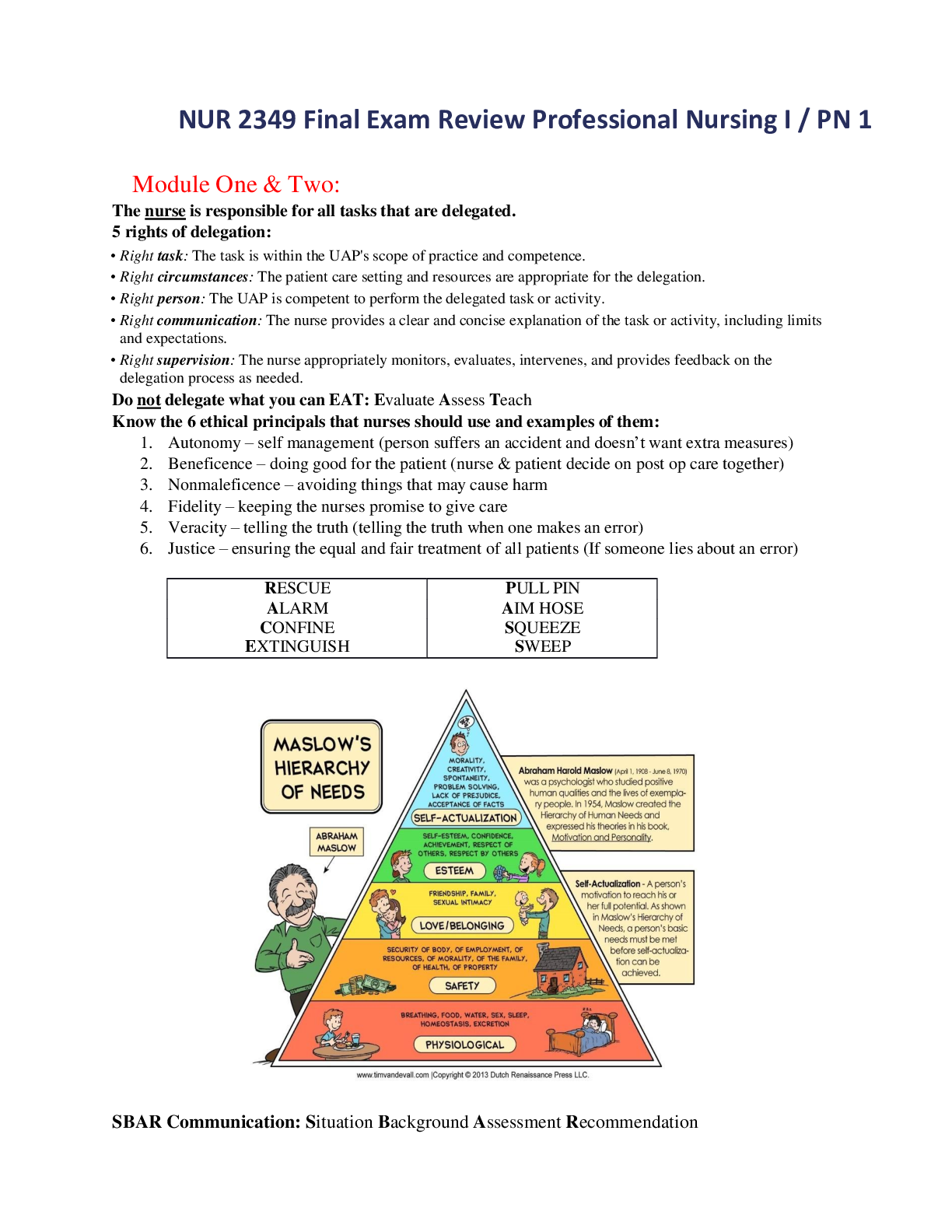*NURSING > STUDY GUIDE > Certified Emergency Nurse (CEN) Exam Review NEUROLOGICAL EMERGENCIES (All)
Certified Emergency Nurse (CEN) Exam Review NEUROLOGICAL EMERGENCIES
Document Content and Description Below
Objectives: At the completion of this section, the learner will be able to: Differentiate between early and late signs of increased intracranial pressure Discuss care of the patient with a ... basilar skull fracture Define autonomic dysreflexia Recognize medications used in the treatment of seizures Verbalize discharge instructions that should be provided to patients with Myasthenia Gravis The CEN exam contains fifteen questions on neurological emergencies which involve the following topics: Alzheimer’s Disease/Dementia Chronic Neurological Disorders (e.g. Multiple Sclerosis, Myasthenia Gravis) Guillain-Barre Syndrome Headache (including temporal arteritis, migraine) Increased intracranial pressure Meningitis Seizure disorders Shunt Dysfunctions Spinal cord injuries Stroke (e.g. Ischemic or hemorrhagic) Transient Ischemic attack (TIA) Trauma Increased intracranial pressure (ICP) Cranial Vault consists of three constituents: brain, cerebral spinal fluid (CSF) and blood. Normal ICP: 0 - 15 mm Hg Elevated ICP: > 20 mm Hg Extremely high ICP may lead to herniation of the brain. Clinical Manifestations of increased intracranial pressure: EARLY SIGNS (Increased ICP) LATE SIGNS (Herniation) Level of Consciousness More stimulation required to get same response Arousable only with deep pain or unarousable Pupils Sluggish response to light Fixed or dilated Motor Function Loss of one or more grades on the strength scale Posturing or no response Vital Signs Tachycardia, hypertensive swings Cushing’s response Treatment Reduce ICP by reducing the constituents of the skull: Brain Blood CSF Fluid Diuretics Hypertonic solutions Patient position Maintain normothermia Prevent/ treat seizures Reduce noxious stimuli Suctioning Surgical decompression CSF drainage catheter Certified Emergency Nurse (CEN) Exam Review Jeff Solheim 2 | P a g e Anisocoria: pupils that are more than one millimeter different in size. Anisocoria occurs normally in as many as 20 – 25% of patients, and is more common with age. -paresis (such as hemiparesis) indicates weakness to an area of the body. -plegia (such as paraplegia) indicates paralysis to an area of the body. Deficits from the neck up affect the same side as the brain lesion (ipsilateral) and deficits from the neck down affect the opposite side as the brain lesion (contralateral) Shunt Dysfunction Problem Symptoms Treatment Obstructed shunt Signs of ICP (irritability, headache, neck pain, vomiting, bulging fontanels, new seizures, change in behavior.) As per ICP for head injury Flushing of the shunt. Infected shunt Signs of obstruction Local wound problems Unexplained fevers Redness, edema and tenderness along skin over the shunt. Signs of peritonitis (if shunt terminates in the abdomen.) Antibiotics Sepsis protocols Over-drainage Depressed fontanels Overlapping of skull bones headache when upright, when supine Subdural hematomas Replacement of shunt Supportive therapy (oxygen, treat seizures and bleeds as per protocols. Suction PRN [Show More]
Last updated: 2 years ago
Preview 1 out of 15 pages
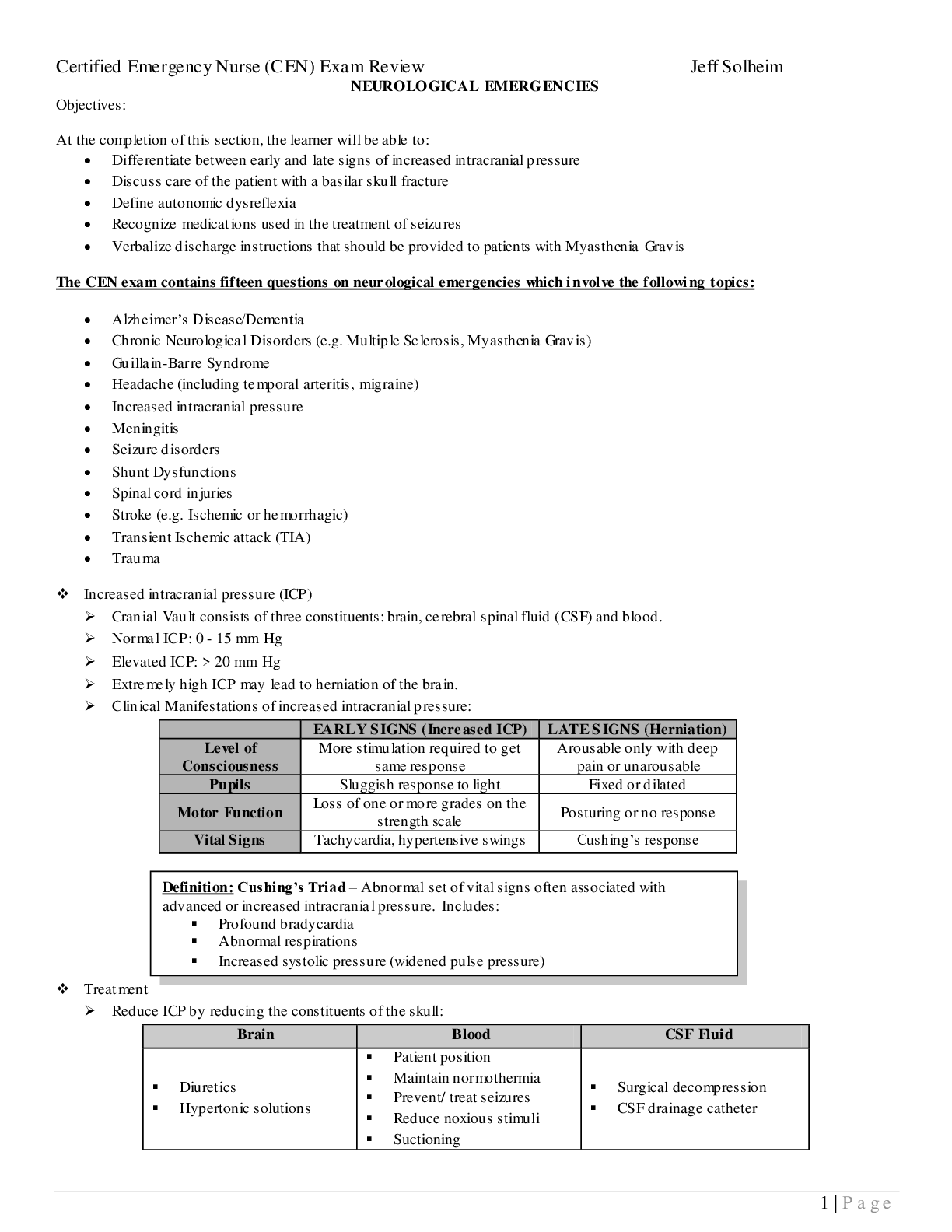
Buy this document to get the full access instantly
Instant Download Access after purchase
Buy NowInstant download
We Accept:

Reviews( 0 )
$8.00
Can't find what you want? Try our AI powered Search
Document information
Connected school, study & course
About the document
Uploaded On
Jul 26, 2022
Number of pages
15
Written in
Additional information
This document has been written for:
Uploaded
Jul 26, 2022
Downloads
0
Views
85





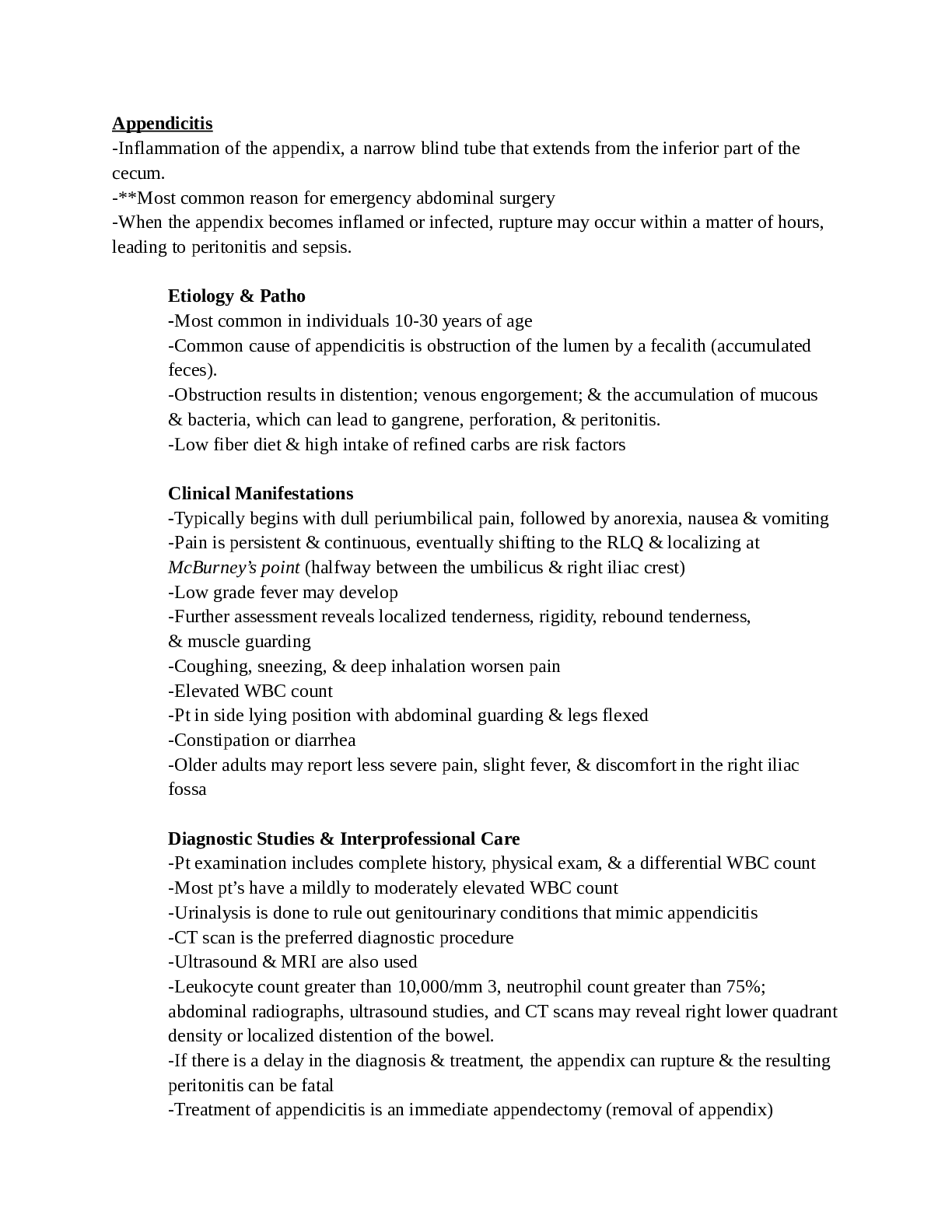

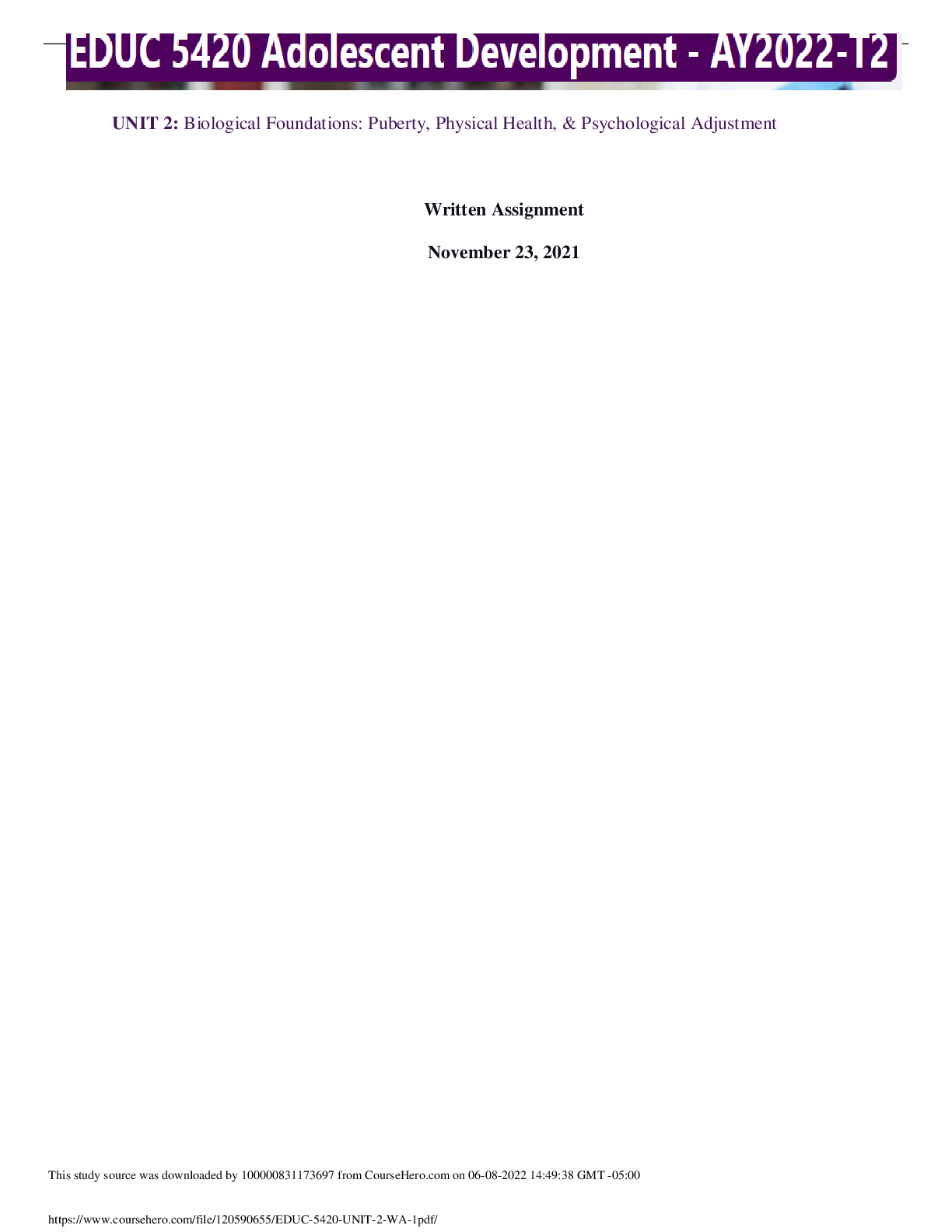

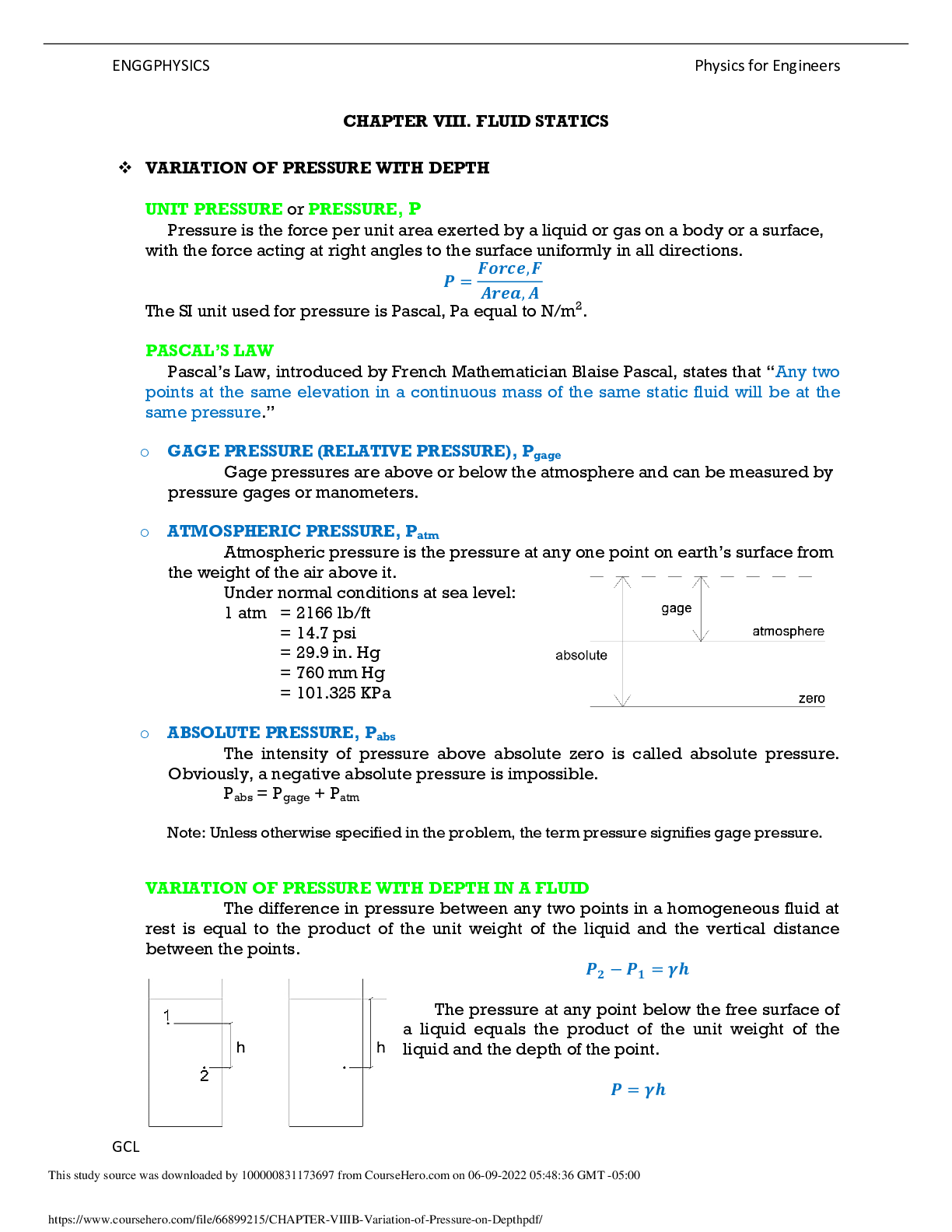

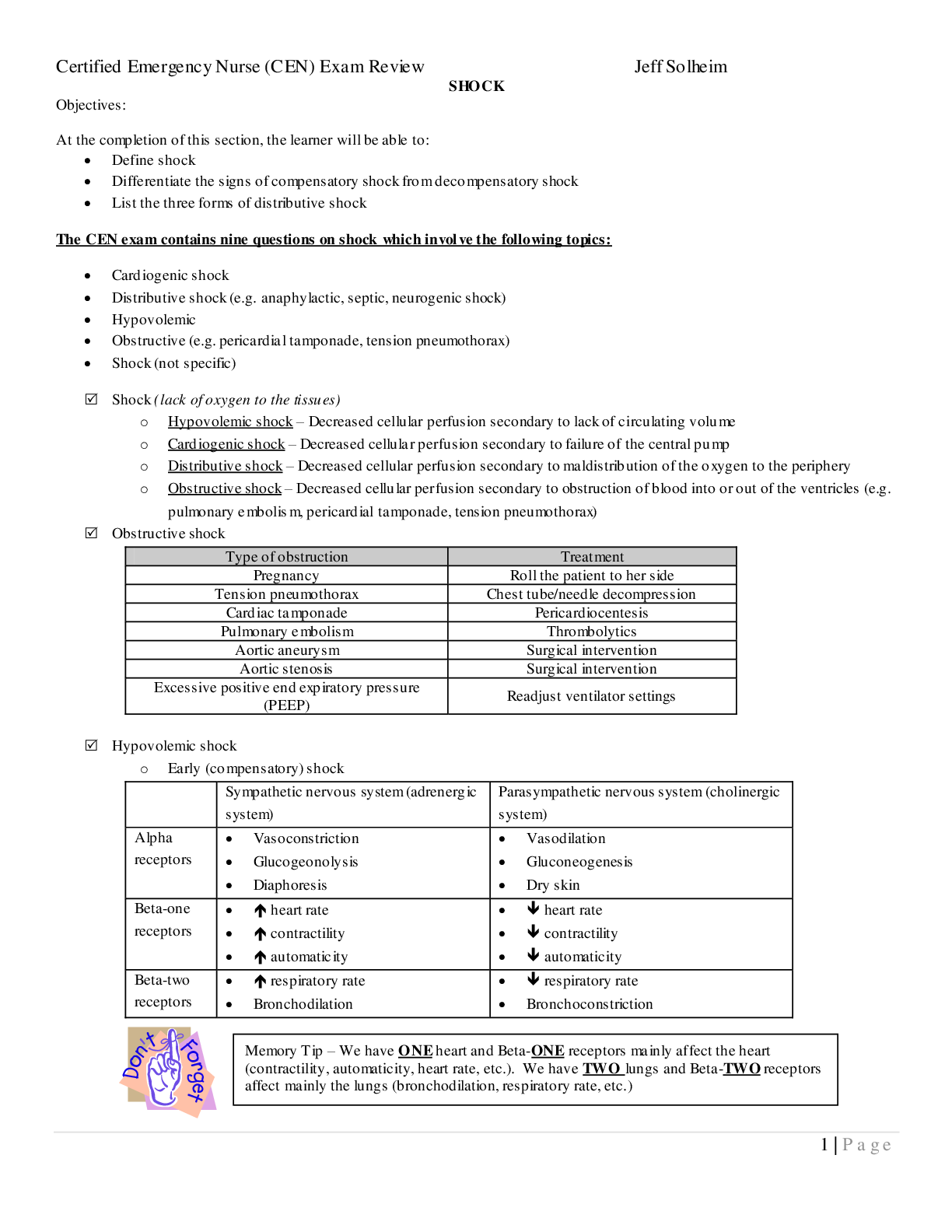
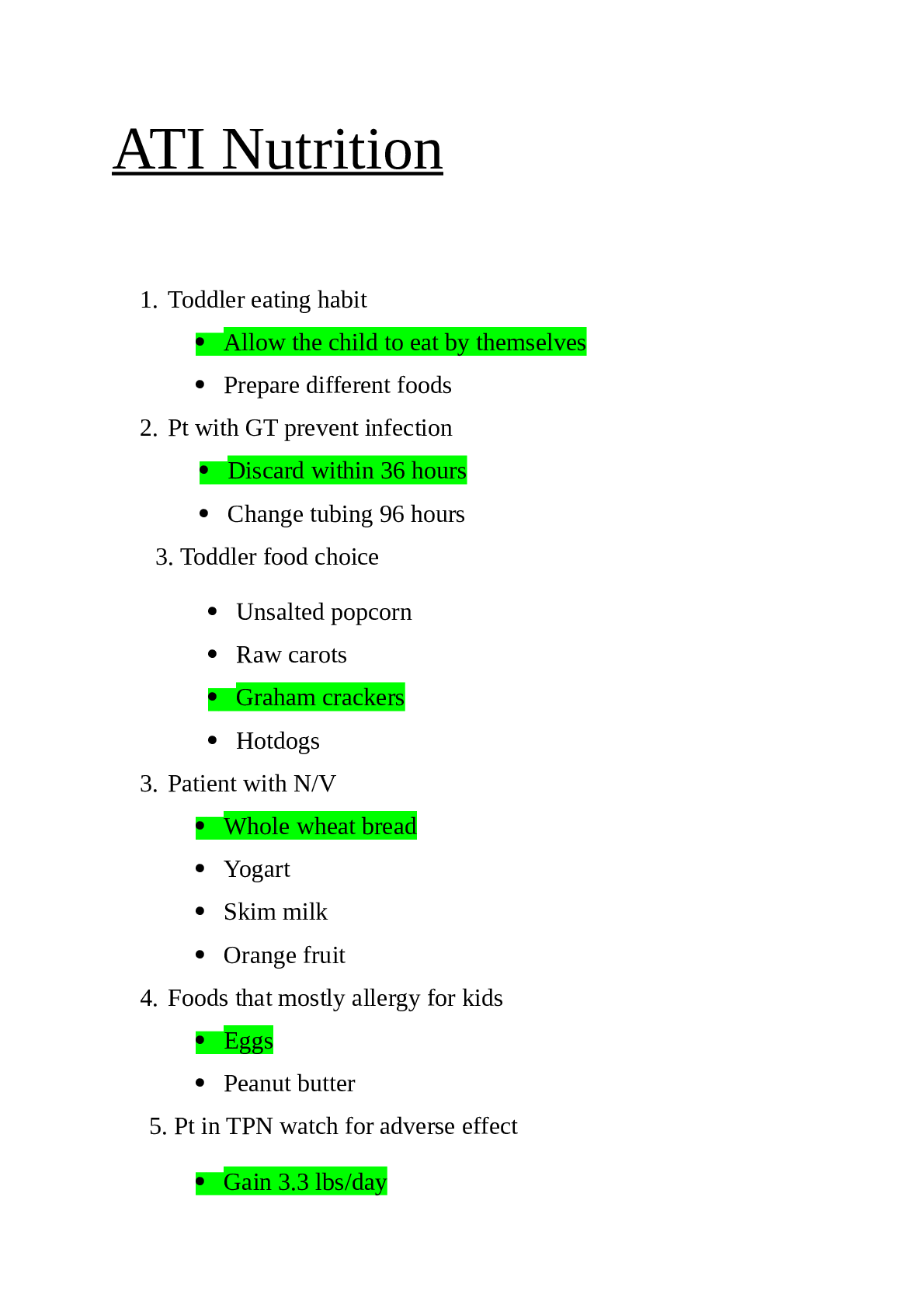
.png)
